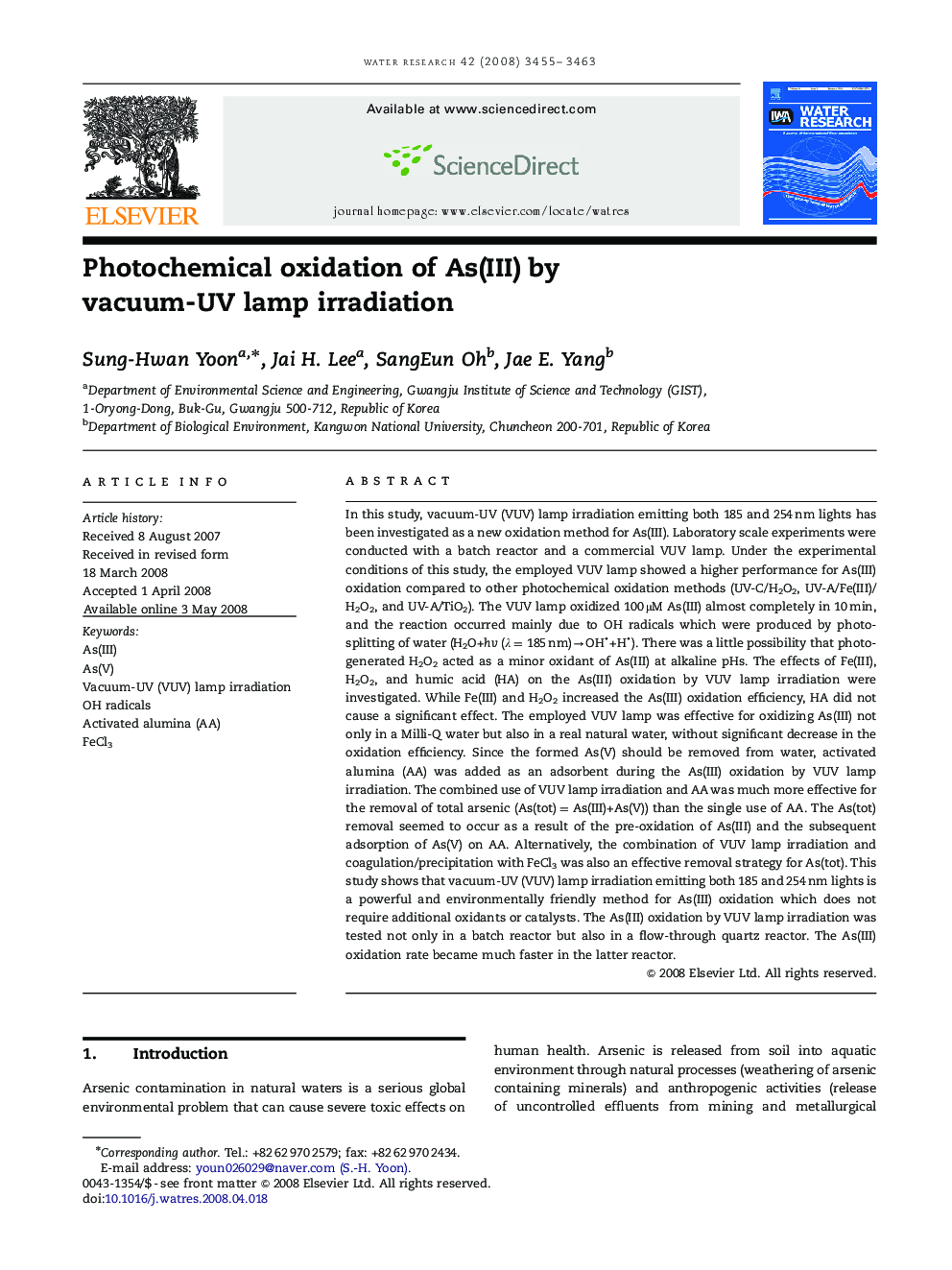| Article ID | Journal | Published Year | Pages | File Type |
|---|---|---|---|---|
| 4485479 | Water Research | 2008 | 9 Pages |
In this study, vacuum-UV (VUV) lamp irradiation emitting both 185 and 254 nm lights has been investigated as a new oxidation method for As(III). Laboratory scale experiments were conducted with a batch reactor and a commercial VUV lamp. Under the experimental conditions of this study, the employed VUV lamp showed a higher performance for As(III) oxidation compared to other photochemical oxidation methods (UV-C/H2O2, UV-A/Fe(III)/H2O2, and UV-A/TiO2). The VUV lamp oxidized 100 μM As(III) almost completely in 10 min, and the reaction occurred mainly due to OH radicals which were produced by photo-splitting of water (H2O+hv (λ=185 nm)→OH+H). There was a little possibility that photo-generated H2O2 acted as a minor oxidant of As(III) at alkaline pHs. The effects of Fe(III), H2O2, and humic acid (HA) on the As(III) oxidation by VUV lamp irradiation were investigated. While Fe(III) and H2O2 increased the As(III) oxidation efficiency, HA did not cause a significant effect. The employed VUV lamp was effective for oxidizing As(III) not only in a Milli-Q water but also in a real natural water, without significant decrease in the oxidation efficiency. Since the formed As(V) should be removed from water, activated alumina (AA) was added as an adsorbent during the As(III) oxidation by VUV lamp irradiation. The combined use of VUV lamp irradiation and AA was much more effective for the removal of total arsenic (As(tot)=As(III)+As(V)) than the single use of AA. The As(tot) removal seemed to occur as a result of the pre-oxidation of As(III) and the subsequent adsorption of As(V) on AA. Alternatively, the combination of VUV lamp irradiation and coagulation/precipitation with FeCl3 was also an effective removal strategy for As(tot). This study shows that vacuum-UV (VUV) lamp irradiation emitting both 185 and 254 nm lights is a powerful and environmentally friendly method for As(III) oxidation which does not require additional oxidants or catalysts. The As(III) oxidation by VUV lamp irradiation was tested not only in a batch reactor but also in a flow-through quartz reactor. The As(III) oxidation rate became much faster in the latter reactor.
